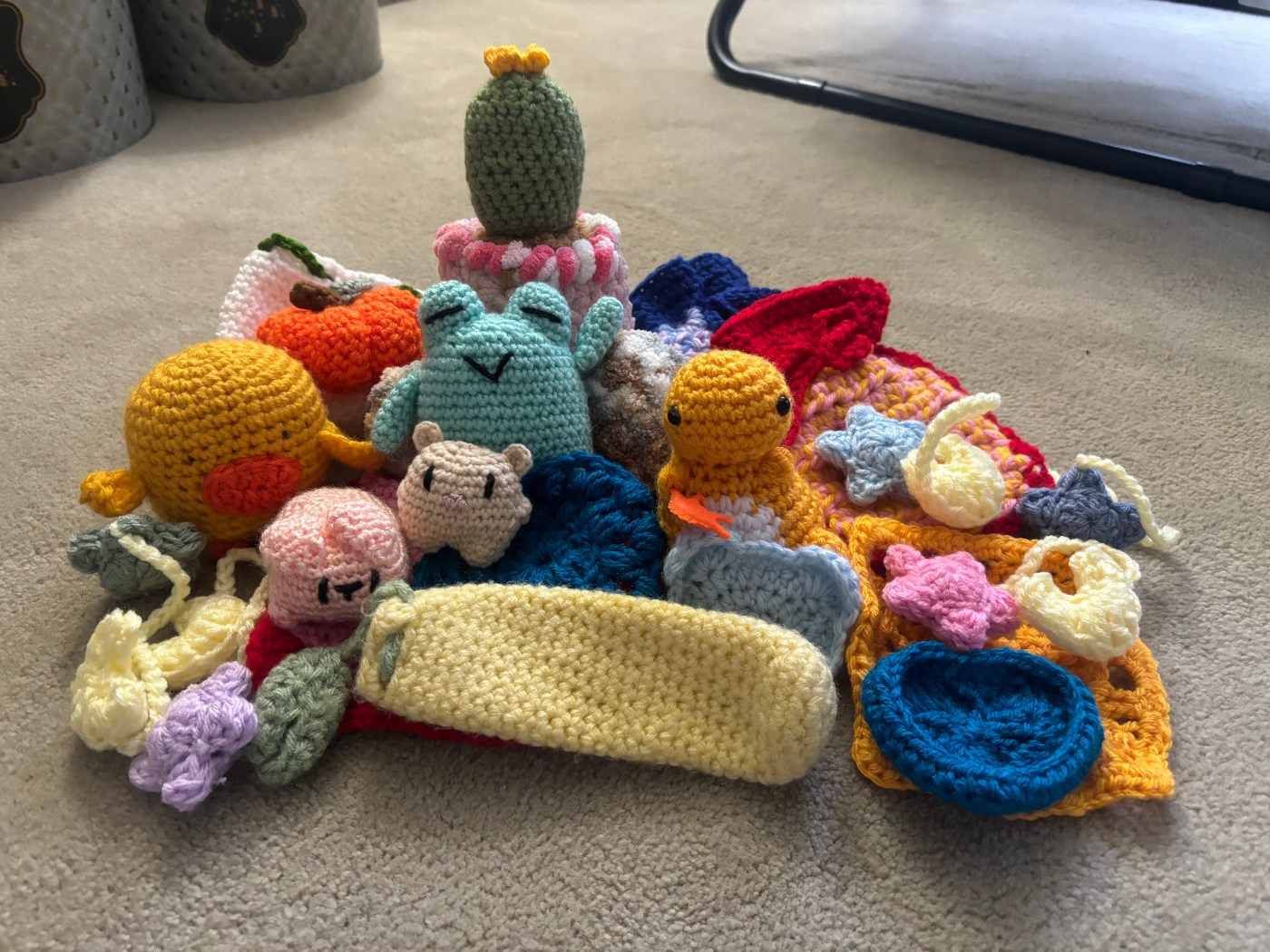
Crochet catches on as a new hobby for Bay Area teens
Editor’s Note: This article was written for Mosaic, an independent journalism training program for high school students who report and photograph stories under the guidance of professional journalists.
In classrooms across the Bay Area, students are putting down their phones and picking up crochet hooks — an old-fashioned hobby that is experiencing a modern resurgence.
Crochet has transformed into a rising trend among student clubs, offering both a creative outlet and a means to manage stress. The COVID-19 pandemic sparked a wave of interest in hobbies like knitting and crochet, laying the groundwork for the growth of these high school clubs.
“Crochet is lots of fun,” said Anna Yue, president of the crochet club at Leland High School in San Jose. “It helps people learn a new skill or hobby as a pastime activity.”
Students say the appeal of crochet lies not only in its accessibility but also in the creative freedom it offers. Ranging from beginner-level scarves to more intricate projects, students can set their own pace. This inclusivity allows participants of all skill levels to engage with the craft — beginners start with simple stitches while more advanced members tackle complex patterns.
Similar clubs have taken root at Branham High School in San Jose, John F. Kennedy High School in Fremont, and Cupertino High School, each providing a welcome respite from academic pressures. All of these clubs were created in the past three years, reflecting increased interest in crochet after the pandemic.
Many students find that crochet clubs are a space to connect with peers outside the traditional classroom environment. At Branham High, students attended club meetings and ate lunch in the classroom together, whether or not they wanted to learn how to crochet.
“A lot of people ended up making friends through the crochet club!” said Nova Duchateau, president and co-founder of Branham’s club.
Crochet clubs also have been founded at Santa Clara High School, Gunderson High School in San Jose, Homestead High School in Cupertino, and Wilcox High School in Santa Clara. The structure of these clubs varies by school. Some focus purely on recreational crocheting, while others channel their skills into charitable endeavors.
At John F. Kennedy High in Fremont, students donate their works to Knots of Love, a nonprofit that delivers crochet blankets and hats to young infants in hospitals and patients battling cancer.
Related Articles
Vietnamese treats, vendors light up East San Jose night market
Día San Jose’s bling and brightness honor loved ones and celebrate Latino culture
Why millennial indie singer Mitski attracts teen audiences
Church outdoors? One San Jose pastor says it spreads the word
Too young to vote, South Bay teens join local politics
“Last year, our club collaborated to produce several baby blankets that were sent to hospitals in California, Massachusetts, and Utah,” said Arsema Fessehaye, co-president of the school’s crochet club.
Despite its ease of learning, one significant challenge many clubs face is ensuring that students have access to the necessary materials. Crochet requires yarn, needles, stuffing, and other supplies, many of which are not readily available in classrooms.
“There are quite a lot of materials needed to start crocheting, and most of them are sold in bulk,” Yue said. “We rely on donations from the club officers, but we have considered selling crochet items that members make to fund more supplies.”
This resurgence of crochet in schools reflects a broader trend of students gravitating toward hobbies that provide mental relaxation in a high-stress academic environment. Kaiser Permanente reports that engaging in creative hobbies can reduce stress, enhance cognitive function, and promote confidence.
“Crochet club provides a space where students can momentarily forget about school and focus on fiber arts,” Clarabelle Wang, president of Cupertino High School’s crochet club, said. “I hope students can feel the joy of being in a community together.”
As crochet clubs continue to grow, they are not merely a craft space; they represent a movement toward community-building and self-care among students. Through their collective efforts, students are weaving together a supportive network that fosters compassion and creativity — preparing them for a future that values both mental well-being and social connection.
Ella Polak is a senior at Leland High School in San Jose.


